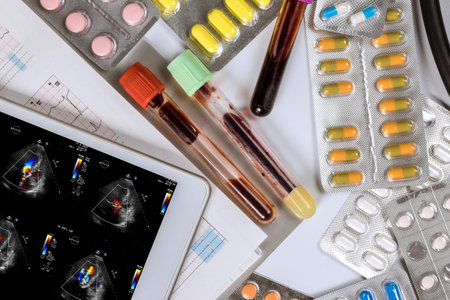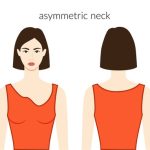1. Understanding Sun Exposure and Skin Sensitivity
When it comes to skin care and aesthetic treatments, sun exposure is one of the most important factors to consider. Ultraviolet (UV) radiation from the sun can have both short-term and long-term effects on the skin. After receiving treatments like laser therapy, chemical peels, or microneedling, your skin becomes more sensitive than usual — making sun protection absolutely essential.
How UV Radiation Affects Your Skin
UV radiation penetrates the skin and damages cells at a deeper level. It breaks down collagen, causes pigmentation issues, and can lead to premature aging. More importantly, UV rays can trigger inflammation and slow down the healing process after aesthetic procedures.
Types of UV Rays
| Type of UV Ray | Penetration Level | Effects on Skin |
|---|---|---|
| UVA | Deep into the dermis | Aging, wrinkles, and long-term damage |
| UVB | Surface layers of skin | Sunburns and direct DNA damage |
Increased Sensitivity After Aesthetic Treatments
Aesthetic procedures often involve exfoliating or removing the top layers of skin. This temporarily weakens your skin’s natural barrier, leaving it more vulnerable to UV damage. For example:
Chemical Peels:
These remove dead skin cells and stimulate new growth but leave fresh skin exposed.
Laser Treatments:
The heat from lasers can make skin extra sensitive to sunlight for days or even weeks.
Microneedling:
This creates tiny punctures in the skin to boost collagen production, but it also increases risk of irritation from UV rays.
Why Timing Matters
If youre planning an outdoor vacation or live in a sunny climate like California or Florida, its crucial to time your treatments wisely. Avoid scheduling intensive procedures right before prolonged sun exposure — especially during summer months when UV levels are highest.
Key Takeaway
Your skin needs extra protection from the sun before and after any cosmetic treatment. Even mild sun exposure can lead to unwanted side effects like hyperpigmentation, redness, or delayed healing. Sunscreen alone isn’t always enough — understanding how UV rays affect post-treatment skin can help you make smarter skincare choices.
2. Common Aesthetic Treatments Impacted by Sun Exposure
When it comes to aesthetic treatments, protecting your skin from the sun isn’t just a suggestion—it’s a must. Many popular procedures leave your skin more sensitive to UV rays, which can increase the risk of complications like hyperpigmentation, irritation, or even scarring if not properly cared for. Below are some of the most common treatments that require extra caution when it comes to sun exposure.
Laser Treatments
Laser treatments—such as laser hair removal, fractional CO2 lasers, and IPL (Intense Pulsed Light)—are highly effective for a variety of skin concerns. However, they work by creating controlled damage in the deeper layers of your skin to stimulate healing and collagen production. This process makes your skin temporarily more vulnerable to the sun.
If youre exposed to sunlight too soon after a laser treatment, you may develop dark spots, uneven pigmentation, or delayed healing. Most providers recommend avoiding direct sun exposure for at least two weeks before and after treatment—and always using broad-spectrum sunscreen.
Chemical Peels
Chemical peels use active acids to exfoliate the top layers of your skin, revealing fresher, smoother skin underneath. While this can help with acne scars, fine lines, and discoloration, it also means that your newly exposed skin is much more sensitive.
Depending on whether you get a light, medium, or deep peel, recovery time and sensitivity levels will vary. But no matter the depth, avoiding sun exposure during the healing phase is key to preventing post-inflammatory hyperpigmentation and other unwanted effects.
Microneedling
This popular treatment involves creating tiny punctures in the skin using fine needles. It helps boost collagen production and improve texture, but also leaves your skin open and vulnerable during recovery.
Because microneedling disrupts the surface layer of your skin, even minimal sun exposure afterward can lead to damage. Wearing SPF 30 or higher every day—and reapplying frequently—is strongly recommended.
Quick Comparison: Sun Sensitivity After Popular Treatments
| Treatment | Why Extra Sun Protection Is Needed | Recommended Sun Avoidance Period |
|---|---|---|
| Laser Treatments | Skin is inflamed and healing; high risk of pigmentation changes | At least 2 weeks pre- and post-treatment |
| Chemical Peels | Newly exposed skin is highly photosensitive | 1–2 weeks depending on peel depth |
| Microneedling | Tiny wounds increase vulnerability to UV damage | 5–7 days minimum post-treatment |
Bottom Line: Protect Your Investment
No matter how advanced or gentle a procedure may seem, sun protection is non-negotiable during recovery. Think of sunscreen as part of your post-treatment care—not just for comfort but also for results that last.
![]()
3. Risks of Sun Exposure After Aesthetic Procedures
After receiving an aesthetic treatment, your skin becomes more sensitive and vulnerable. Sun exposure during this healing period can lead to several unwanted side effects that may affect the results of your procedure. Its important to understand these risks so you can take proper precautions and protect your investment in your skin.
Common Side Effects of Sun Exposure Post-Treatment
Here are some of the most common issues that can occur if you expose your skin to the sun too soon after an aesthetic treatment:
| Side Effect | Description | Why It Happens |
|---|---|---|
| Hyperpigmentation | Dark spots or patches on the treated area | The skin produces extra melanin as a defense against UV rays, especially when its healing |
| Burns | Redness, blistering, or increased sensitivity | Treated skin is more delicate and can burn faster under sunlight |
| Delayed Healing | Longer recovery time and risk of uneven results | UV exposure interferes with the skin’s natural repair process |
Why Treated Skin Is More Vulnerable
Aesthetic procedures like chemical peels, laser treatments, microneedling, and dermabrasion remove or damage the outer layers of skin to stimulate regeneration. While this leads to smoother, fresher-looking skin over time, it also means the protective barrier is weakened temporarily. This makes it easier for UV rays to cause harm.
Even Cloudy Days Can Be Risky
Many people think they’re safe from sun damage on cloudy days, but up to 80% of UV rays still penetrate through clouds. That means even indirect sun exposure while driving, walking outside, or sitting near a window can impact healing skin.
Tips to Avoid These Risks
- Avoid direct sun exposure for at least 1-2 weeks post-treatment (or as advised by your provider)
- Always wear broad-spectrum sunscreen with SPF 30 or higher—even indoors if near windows
- Use hats, sunglasses, and protective clothing when going outside
- Schedule treatments during times when you’ll naturally be out of the sun more (like fall or winter)
Your skin works hard to heal after an aesthetic procedure. Giving it the protection it needs from the sun ensures better results and lowers your chances of complications.
4. Best Practices for Sun Protection Post-Treatment
After receiving aesthetic treatments like chemical peels, laser resurfacing, or microneedling, your skin becomes more sensitive and vulnerable to sun damage. Proper sun protection is crucial during the healing process to prevent complications like hyperpigmentation, redness, or delayed recovery. Heres how you can protect your skin effectively after treatment.
SPF Is Non-Negotiable
Always wear sunscreen with broad-spectrum protection (UVA and UVB) and an SPF of at least 30 — though many dermatologists recommend SPF 50 post-treatment. Look for mineral-based formulas with zinc oxide or titanium dioxide, which are gentle on sensitive skin. Reapply every two hours if youre outdoors, and immediately after sweating or swimming.
Recommended Sunscreens Post-Treatment
| Product Type | Key Ingredients | Why It’s Good |
|---|---|---|
| Mineral Sunscreen (SPF 50) | Zinc Oxide, Titanium Dioxide | Gentle on sensitive skin; provides physical UV barrier |
| Tinted Mineral Sunscreen | Zinc Oxide, Iron Oxides | Adds light coverage; helps prevent hyperpigmentation from visible light |
| Sunscreen Stick | Zinc Oxide, Beeswax | Portable; great for reapplying on small areas like nose and cheeks |
Protective Clothing Is Your Skins Best Friend
Besides sunscreen, physical barriers are one of the best ways to shield your treated skin from the sun. Wear wide-brimmed hats, oversized sunglasses, and long-sleeved UPF-rated clothing when heading outdoors. Don’t forget about necks and ears—these areas are often overlooked but highly exposed.
Lifestyle Adjustments That Make a Difference
During the first week or two after treatment, try to:
- Avoid peak sun hours: Stay indoors between 10 AM and 4 PM when UV rays are strongest.
- Use umbrellas or seek shade: Especially when walking outdoors or sitting in open areas.
- Limit outdoor workouts: Switch to early morning or evening exercises to reduce sun exposure.
- Avoid tanning beds: These emit harmful UV radiation that can worsen skin damage post-treatment.
Quick Tips for Everyday Protection
- Keep a mini sunscreen in your bag or car for easy reapplication.
- Apply sunscreen even on cloudy days—UV rays penetrate clouds!
- If youre recovering from facial treatments, consider wearing a breathable face shield when driving or walking outside.
- Don’t rely solely on makeup with SPF—it’s not enough protection by itself.
By following these expert-approved tips, you’ll give your skin the best chance to heal safely and beautifully after any aesthetic procedure.
5. Timing Aesthetic Procedures for Optimal Results
When it comes to aesthetic treatments, timing is everything—especially if you want to avoid complications from sun exposure. After procedures like chemical peels, laser treatments, or microneedling, your skin becomes more sensitive and vulnerable to UV damage. Scheduling your treatment at the right time of year can help reduce these risks and promote better healing.
Why Sunlight Matters
After many cosmetic procedures, your skin’s natural barrier is temporarily weakened. This makes it easier for UV rays to cause issues like hyperpigmentation, prolonged redness, or even scarring. That’s why avoiding strong sun exposure during recovery is crucial.
Best Seasons for Aesthetic Treatments
Generally, fall and winter are the best seasons to undergo most aesthetic treatments. During these months, the suns intensity is lower, and people tend to spend more time indoors—both of which help protect your healing skin.
Seasonal Guide for Popular Treatments
| Treatment | Recommended Season | Reason |
|---|---|---|
| Chemical Peels | Fall / Winter | Less sun reduces risk of hyperpigmentation |
| Laser Resurfacing | Late Fall / Winter | Minimized UV exposure allows better healing |
| Microneedling | Fall / Early Spring | Mild weather helps maintain moisture and reduces sun risk |
| IPL Photofacial | Winter / Early Spring | Lower sun intensity helps prevent post-treatment pigmentation |
Avoiding Peak Sun Months
If possible, try not to schedule intensive skin treatments in late spring or summer (May through August in most U.S. regions). The longer daylight hours and stronger UV rays increase the chances of unwanted side effects.
Plan Ahead for Better Results
If you’re aiming to look your best for a special event—like a wedding or vacation—plan your treatment at least a few months in advance during a low-sun season. This gives your skin plenty of time to heal and achieve optimal results without added stress from the sun.
Pro Tip:
No matter when you get your treatment, always use broad-spectrum sunscreen with SPF 30 or higher during the day—even on cloudy days or when youre mostly indoors near windows.


